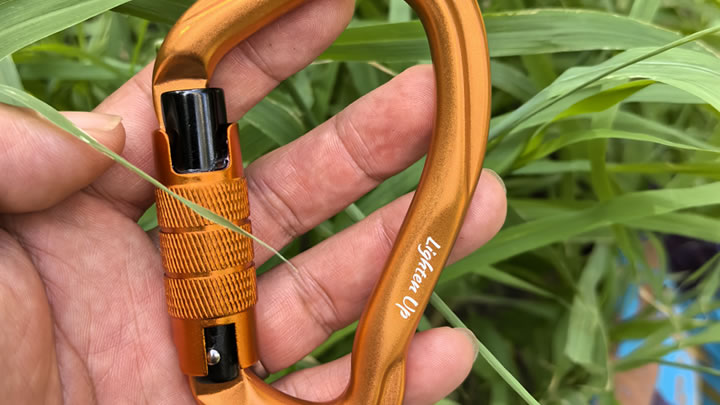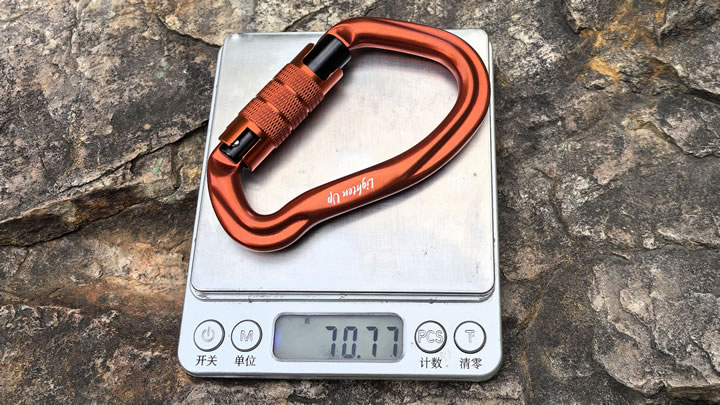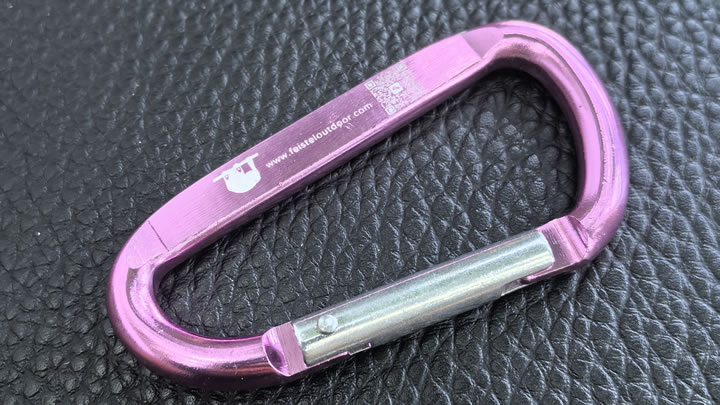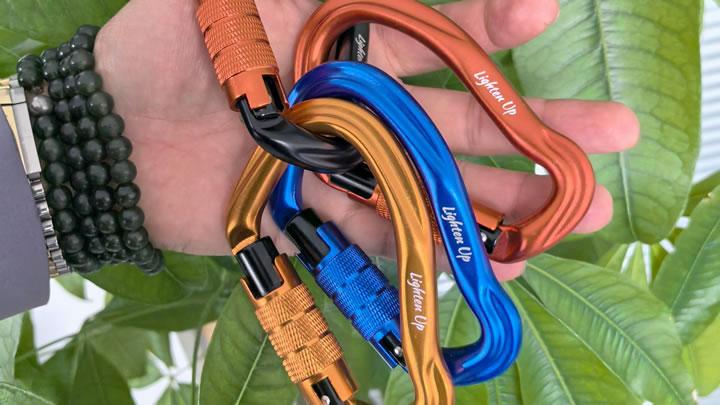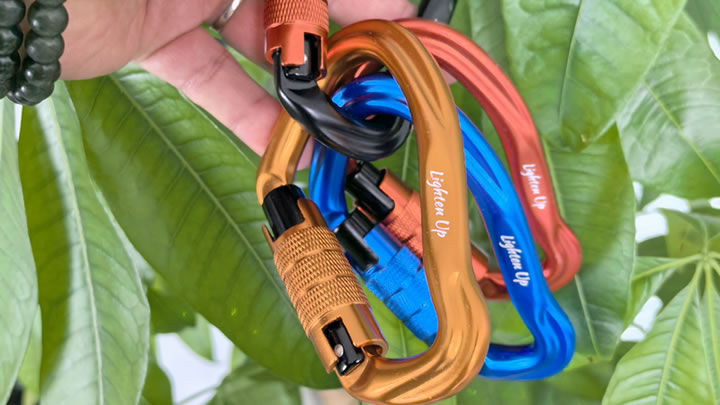History of carabiner design in rock climbing
History of Carabiner Design in Rock Climbing
Carabiners are an essential and iconic part of rock climbing gear. Their design evolution over the years has been shaped by the need for enhanced safety, functionality, and lightweight construction. This article delves into the rich history of carabiner design in rock climbing, exploring the key milestones and innovations that have made them the reliable tools we know today.
Early Origins and Influences
The origins of the carabiner can be traced back to the 19th century, with roots in non - climbing applications. The word "carabiner" comes from the German "karabinerhaken", which originally referred to a hook used by soldiers, specifically carabiniers, to attach their carbines to their belts. These early hooks had a spring - loaded gate, a feature that would become fundamental to the modern carabiner design.
In the late 19th century, German and Austrian mountaineers began to adopt these metal loops with spring - loaded gates for climbing purposes. Initially, they used gourd - shaped carabiners that were originally created for mining or other utility purposes. These early climbing carabiners were made of steel, which provided strength but was also quite heavy.
The 1910s - 1930s: Pioneering Steps in Climbing - Specific Design
In the 1910s, German climber Otto "Rambo" Herzog played a significant role in popularizing the use of carabiners in climbing. He saw fire brigades using pear - shaped karabiners on their belts in 1910 and quickly adapted them for climbing. By 1912, climbers like Hans Dülfer were using these carabiners on challenging climbs, such as on the east façade of Fleishbank. These early carabiners, whether pear - shaped or oval, made the connection between the rope and pitons much easier compared to previous methods. However, the gates on these early prototypes were not always reliable, as they could be accidentally opened during a climb.
In the 1930s, the climbing world saw some important developments. H - locks, or pear - shaped locks, became the standard for long - distance, multi - pitch technical climbing. Hardened steel carabiners were introduced, and the oval shape started to gain popularity. The first American carabiner was likely a steel - made oval one, possibly manufactured for the US military. In 1938, the Sporthausschuster (asmü) oval climbing - specific carabiner was used on the challenging terrain of the Eiger.
The 1940s - 1960s: Material Innovations and Shape Refinements
The 1940s brought a major innovation with the use of light alloy from the aeronautical industry. In 1937, the Frenchman Pierre Allain designed the first carabiner using this new alloy, which was later commercialized in 1947. Lighter materials were a game - changer as they reduced the overall weight that climbers had to carry, especially during long and strenuous climbs.
Riccardo Cassin and Felice Bonaiti, in the 1940s, studied the strength of carabiners and invented the asymmetrical grab, which we now know as the "D - shape". The D - shape design was a significant improvement as it concentrated the load on the stronger side of the carabiner, enhancing its strength - to - weight ratio. By the 1950s, the D - shape had become a standard in the climbing world.
In 1957, Yvon Chouinard began hand - forging D - shape carabiners and selling them. His company, Chouinard Equipment, further updated the original carabiner design in 1968. Their carabiners had more strength, less weight, and smoother corners. With a closed - gate strength of 5,000 lbs. and an open - gate strength of 2,600 lbs., they met the ratings required for carabiners today. This was a crucial step in ensuring that carabiners could withstand the forces exerted during climbing falls safely.
The 1970s - 1990s: Further Innovations in Functionality
The 1960s and 1970s saw the introduction of new types of carabiners. In 1969, wire - gate carabiners were patented for maritime use and later, in 1996, were sold for climbing. The wire - gate design had the advantage of not getting clogged with debris and was less likely to come unhooked under force compared to traditional designs.
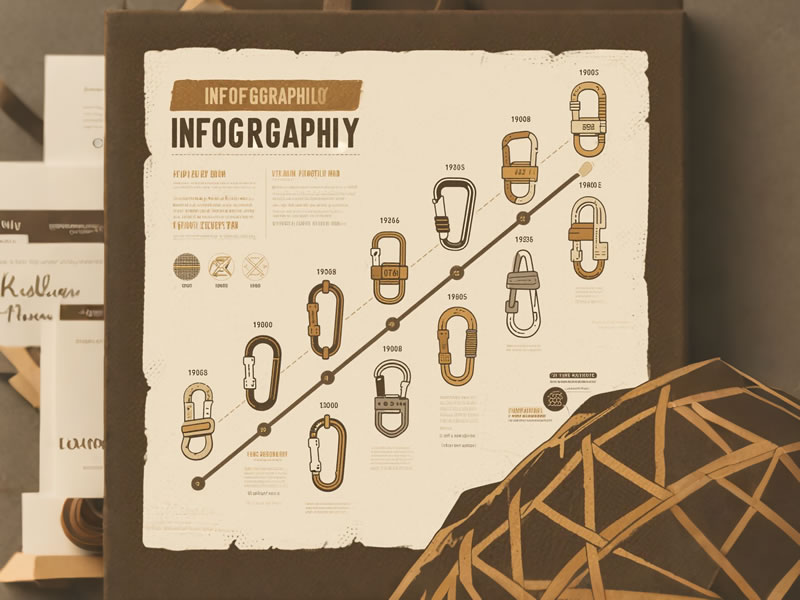
In the 1980s, the bend gate was introduced. This design made it easier for climbers to clip the carabiner onto ropes or other gear, especially in high - stress situations. Around 1984 - 1987, the keylock was developed. The keylock design was a significant improvement as it avoided snagging, which could be a dangerous situation during climbing, especially when dealing with ropes or other equipment.
Modern - Day Carabiners: Continuing the Tradition of Innovation
Today's carabiners come in a wide variety of shapes, sizes, materials, and locking mechanisms. The basic shapes such as the pear - shaped, oval, and D - shaped carabiners still exist, each with its own advantages. Pear - shaped carabiners are popular for their larger basket, which can hold more gear. Oval carabiners are known for their ability to distribute load symmetrically, while D - shaped carabiners are favored for their strength - to - weight ratio.
Modern carabiners are made from high - tech materials such as aluminum alloys and, in some cases, titanium. These materials offer excellent strength while keeping the weight down. There are also different types of locking mechanisms, including screw gates, twist - lock gates, and auto - locking gates, each designed to provide an extra level of safety by preventing accidental opening.
In addition, carabiners are now designed with specific climbing activities in mind. For example, there are carabiners optimized for sport climbing, which require quick and easy clipping, and those for ice climbing, which need to be resistant to cold temperatures and ice build - up. The development of carabiners continues, with manufacturers constantly researching and innovating to meet the evolving needs of climbers around the world.
In conclusion, the history of carabiner design in rock climbing is a story of continuous innovation driven by the pursuit of safety, functionality, and lightweight design. From their humble beginnings as military - related hardware to the sophisticated and reliable climbing tools of today, carabiners have come a long way, and their evolution shows no signs of stopping.

